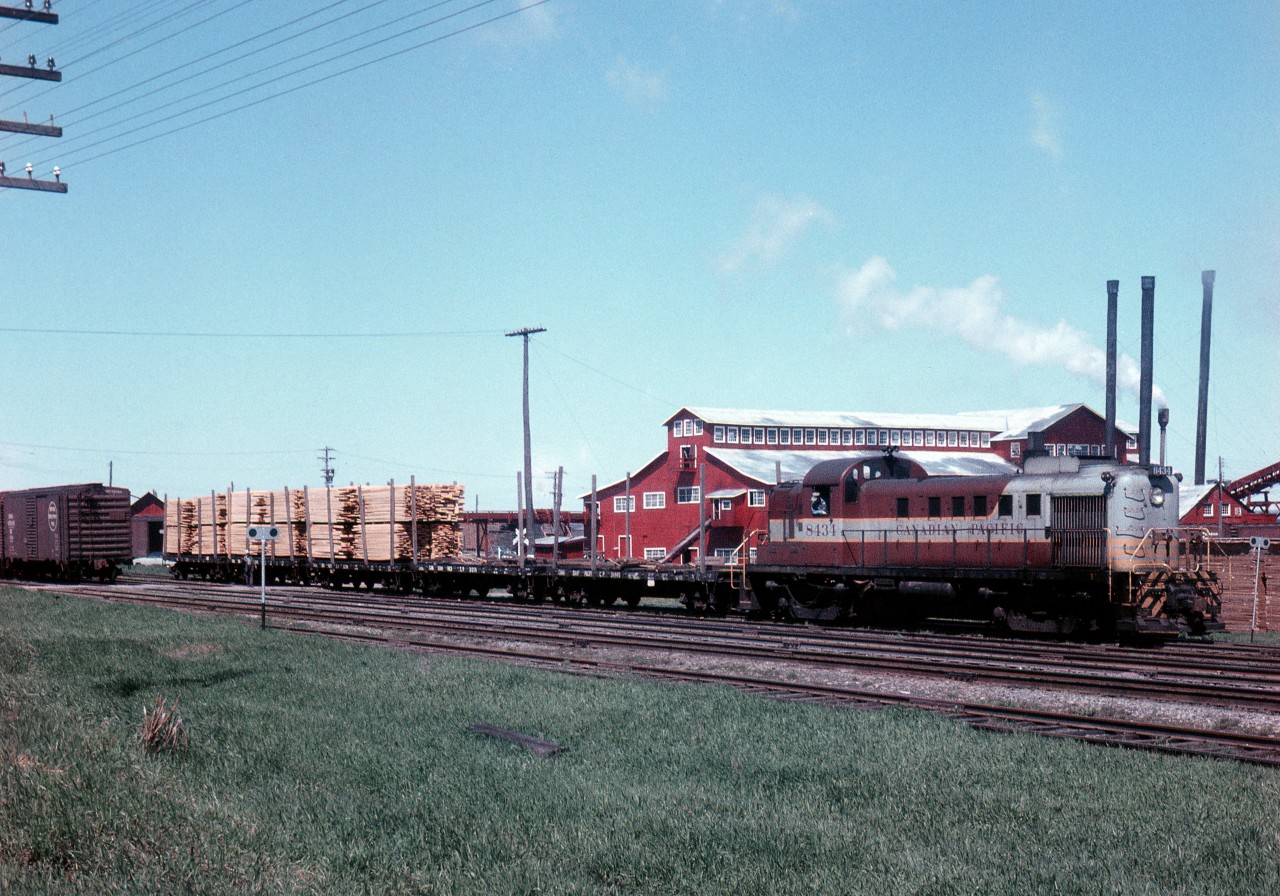|
Caption: On May 12, 1958, Stephan Delmonte (Del) Rosamond is trackside at the same location across from Consolidated Paper and Lumber Company mill in Pembroke, ON. The eastbound wayfreight is working in the yard, this time with Montreal Locomotive Works – built diesel-electric roadswitcher RS-3 No. 8434. The locomotive is just over 4 years old, having entered service in April 1954. Del's picture suggests that the crew, has just lifted three loads of rough sawn pine boards off the mill's sorting table track, is about to set-off the loaded flatcars in the yard, and then return to the sorting table track with the two empties so that further loading might continue. Of note, the sorting table is 200 feet long and allows for the spotting of 5 rail cars at a time. Each flatcar, on average, can be loaded with 8000 board feet per diem. Available information suggests that the lumber on the flatcars is destined to be delivered to either the Pembroke Shook Mills – where it will be piled, or to the Barrands Planning Mill where it will be planed and then reshipped to customers in boxcars.
Noteworthy also is the fact that Del is observing local railroading on the CPR as a strike by the Canadian Brotherhood of Locomotive Firemen and Enginemen against the Company enters its second day. It would be called off one day later on the 13th of May, just three days after being initiated. This is the second walk-out by CPR firemen – the first being nine days in January 1957- in protest to the elimination of 2800 yard and freight service firemen jobs brought on by the introduction of diesel-electric locomotives and the ensuing technological change.
The current job action by the Brotherhood was initiated after a Royal Commission concluded earlier in the year, that the elimination of the locomotive firemen positions would not endanger public safety. The decision made in favour of the Company is regarded as a watershed moment in Canadian railway history.
Digital scanning, research and narrative courtesy of Raymond Farand.
|



What a wonderful picture of railways of that time.
Rails doing what trucks would later do. Lumber was the main economic engine of the upper Ottawa valley.
I understand there was a recent fire at a lumber mill in Pembroke.
How much forestry is left I wonder.